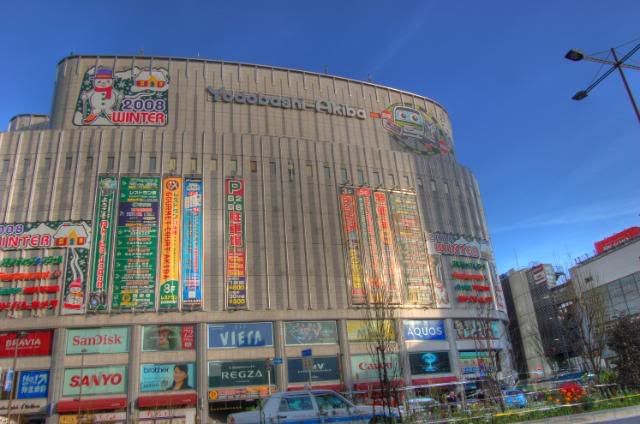
HDR (High Dyamic Range) photography is interesting. A normal photo often has parts under or over exposed. For example, the building you are taking a shot of looks fine, but the sky is washed out, and just a white overexposed blur. Or the sky is a beautiful blue with soft white clouds, but the trees in the foreground are just silhouettes, totally underexposed. HDR lets you take multiple shots at different exposures and combine them with a computer program to make stunning images.
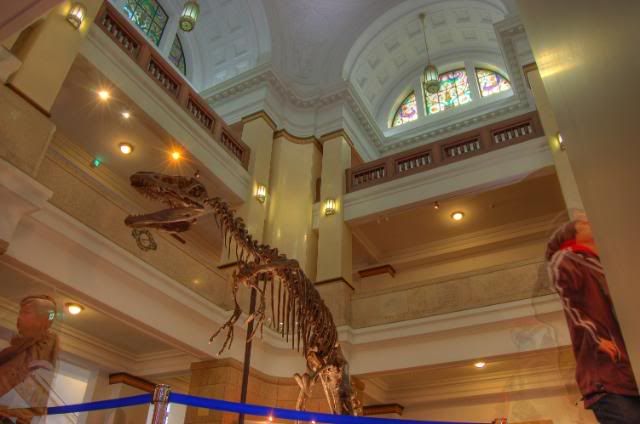
I'm pretty new at this, so any advice would be appreciated. Here's my work flow:
Find the correct exposure.
First I set the camera to A (aperture priority) and pick a good aperture size. F8 seems to be good for most shots. Take note of what shutter speed the camera automatically gives you. Let's say for example it gives you 15, which means one fifteenth of a second. Take a note of this.
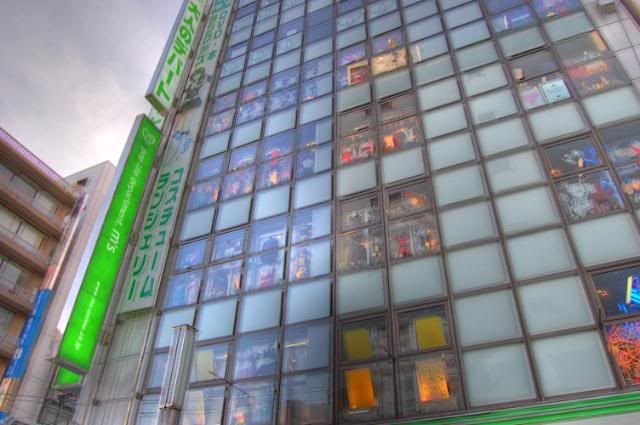
Take the first shot.
Set the camera to M (manual). The settings should be F8 and a shutter speed of 15. Take the shot. You are using a tripod, right?
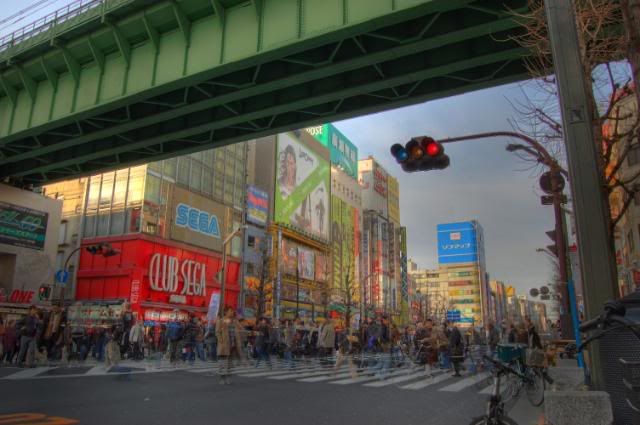
Take the underexposed shot.
Take a shot at -2 EV. What does this mean? Each EV is an exposure level. Dividing or multiplying by 2 gets you a change in 1 EV. So 15/2 = 8 (its rounded). Divide by 2 again to get 4. Take a shot with F8 and a shutter speed of 4. On the Nikon D40 (most cameras I think) just turn the dial 6 times (each click is 1/3 EV).
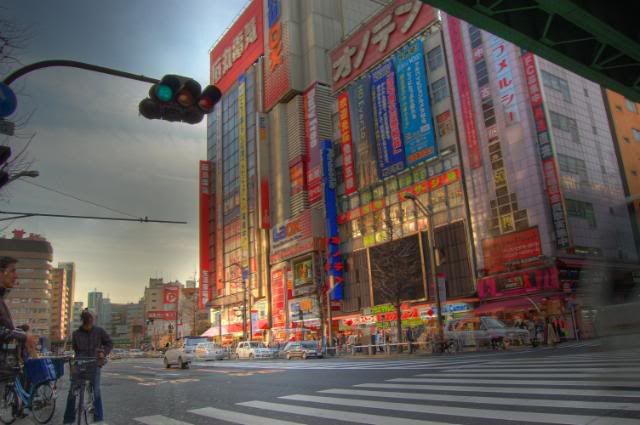
Take the overexposed shot.
Underexposed was -2 EV, so now take one that is +2 EV. 15 x 4 = 60. Take a shot at F8 and a shutter speed of 60.
Note: Many DSLR cameras have something called AEB (Auto Exposure Bracketing). This lets you tell the camera to take a certain number of shots at different EVs automatically. For these, just set it to take your 3 shots and click the shutter once, it will do all the work for you. But the Nikon D40 lacks this! If I had known more about this I might have bought a different camera. Like the Canon Rebel XT. It's nigh impossible to take hand held HDR shots, because of all the fiddling with dials and knobs and buttons. Even on the tripod, my shots are often slightly misaligned. Booo!
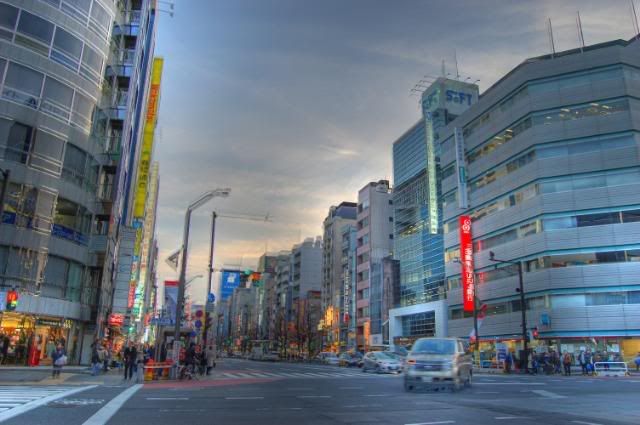
On the computer.
I use Photomatix, a program built for HDR processing. Just follow the instructions in their program for merging the 3 shots together. All of these shots here are using the default settings. There is a lot to play with in this program.
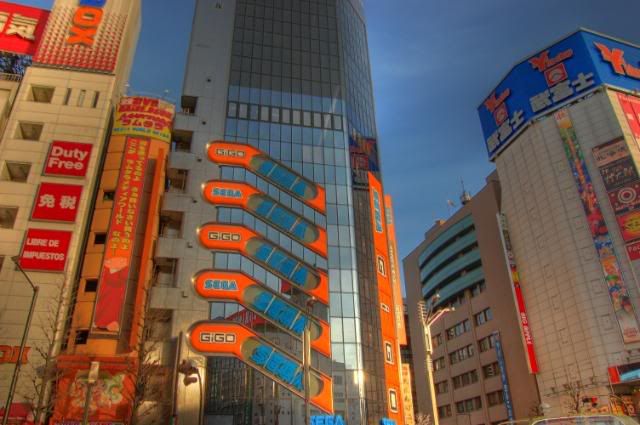
How did my shots come out? Kinda crap, I think. A lot had people in them, which creates weird "ghost" effect.
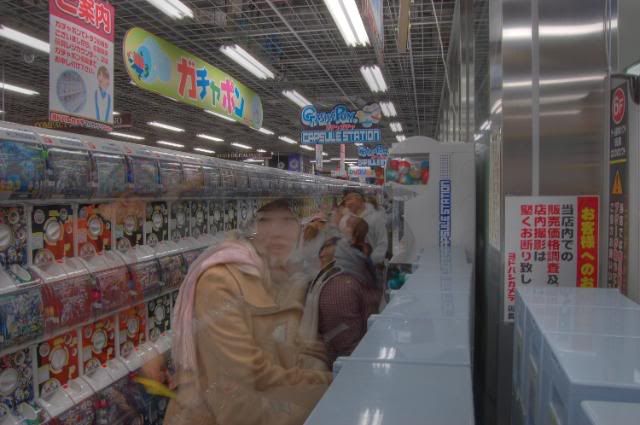
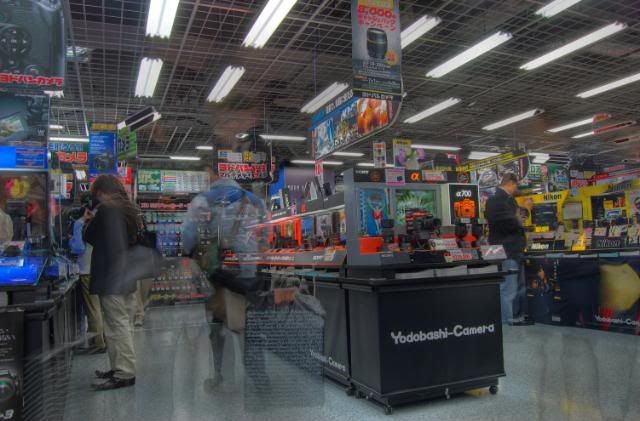
Most HDR shots are scenery type shots.
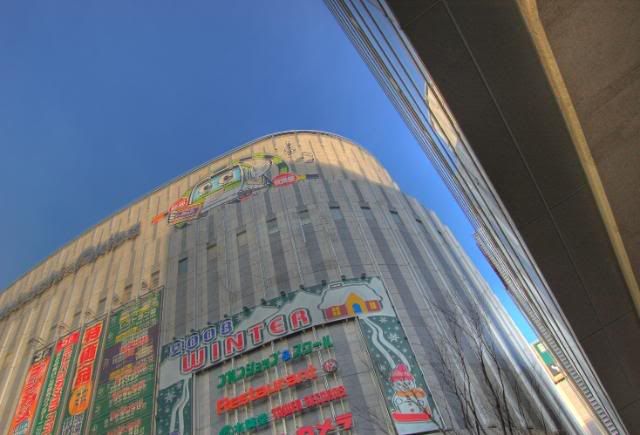
But sometimes "ghosting" can create an interesting image.

HDR doesn't lend itself to everything, but the best shots I've seen are
- Indoors with bright windows and lots of interior detail.
- Outside with distinct cloud formations.
- Anywhere with a lot of shadow and bright spots.
FYI, these shots are mostly from the Akihabara area in Tokyo.
Want to see the power of HDR? Check out the HDR pool over at flickr. Some are really amazing.

4 comments:
I never got around to trying HDR photography (I read a few articles, downloaded photomatrix, but haven't registered or used it)
Maybe you should try using some of those shots with the single RAW HDR method: http://www.vanilladays.com/hdr-guide/#singleraw
I read that guide about using RAW just the other day. We must both read the D40 blog. Actually, I think I found that blog from The Daily Bubble Tea maybe.
I look forward to seeing more tries... Once I stop taking these Chinese language courses that eat up all my free time I'll likely take a shot at it.
Yeah, it sucks about the D40 not having that Auto Bracketing function. I'm thinking of getting a remote shutter release for this reason so there is minimal camera movement for multiple shots.
Check out a program called 'Dynamic-Photo HDR.' You can take single RAW images and convert them to HDR very easily. Only problem is getting too carried away to the point where your photos look like cartoons. Photomatix is a really good program I would like to explore more.
Post a Comment